Orchestration – Orchestral Accompaniment
When used as accompaniment for a vocal or instrumental soloist, the main problem is how make full use of the orchestra, while not drowning out the soloist. If the orchestra is too often reduced to discrete murmuring in the background, the overall effect will be feeble.
The basic principles for using the orchestra as accompaniment are as follows:
- Bring out the soloist as much as possible by contrast, whether of timbre (e.g. violin solo vs. woodwind), of register (e.g. accompany a cello solo with only upper strings), or of rhythm (e.g. make the solo line more active than the accompaniment).
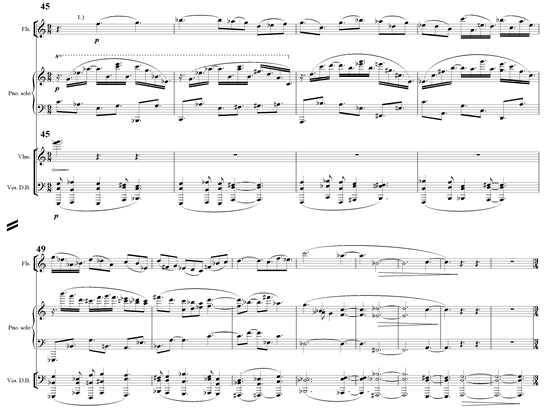
Piano Concerto: The piano uses a register avoided by the other instruments, filling in the gap between the flute and the low strings. It also has faster notes values.
(repertoire example) Beethoven, Violin Concerto, 1st movement, m. 102 ff: a small wind ensemble accompanies the (very high) violin.
- Lighten the orchestra by aerating the texture with frequent rests, plucked or staccato basses. Limit held notes in the accompaniment to dull or weak registers.
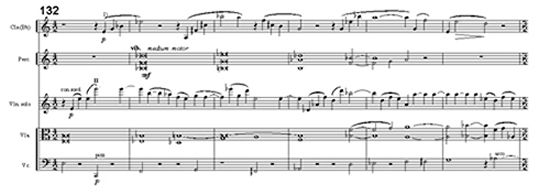
Violin Concerto: The soloist easily emerges here. The sustained harmony in the violas is in a different, subdued register; the chords in the vibraphone do not sustain, and are placed lower than the soloist. The clarinet counterpoint, while in the same register as the solo violin, is contrasting in color, and punctuated by rests. The bass is very light: cello pizzicato.
(repertoire example) Prokofiev, 2nd Violin Concerto, 1st movement, m. 171 ff: Note the short rests in the wind and in the lower string motives, as well as the other strings, which play pizzicato.
- Keep the relationship between orchestra and soloist varied and fluid: Sometimes use dialogue, sometimes have each accompany the other.
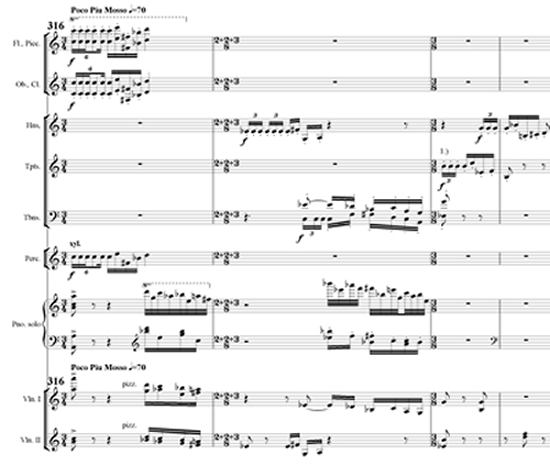
Piano Concerto: The soloist first has a dialogue with upper wind and xylophone. However, the second time, the brass continues with counterpoint during the soloist’s phrase. Pizzicato sharpens the piano’s attacks in m. 316, and adds energy to the brass counterpoint which follows.
- When great force is required, present the soloist in alternation with the orchestra: This gives the illusion of a confrontation between equals.
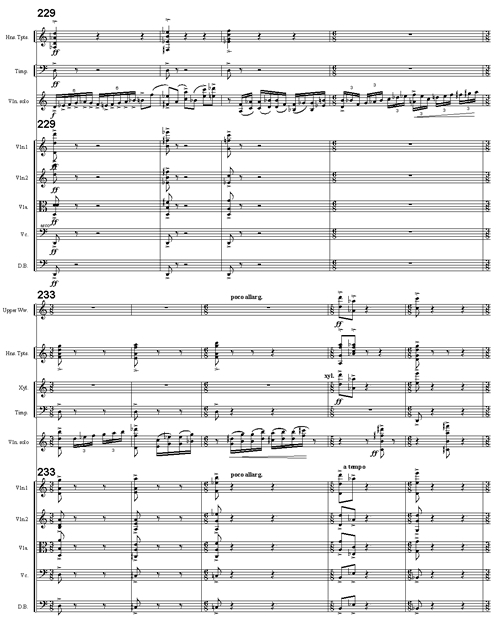
Violin Concerto: The solo violin part is punctuated by loud orchestral chords, giving the impression of a lively struggle between soloist and orchestra.
(repertoire example) Beethoven 5th piano concerto, 1st mvt., m. 304 ff.
- To avoid thinness in the orchestral writing, create richness by multiple planes, even if each plane only contains a few notes.
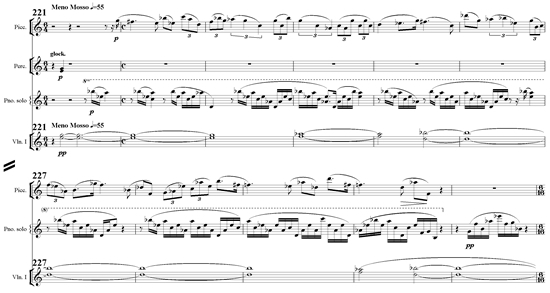
Piano Concerto: A very airy dialogue between piccolo and piano is enriched by gentle held notes in the violins. The glockenspiel triggers the held notes and draws attention to them.
(repertoire example) Bizet, Carmen, 1st act., Scene 1, five bars after the end of the opening chorus (Andante un poco): Short string chords accompany high violins in a light, triplet figure, and a simple woodwind counterpoint in half notes. The effect is rich but extremely transparent.
- When accompanying the human voice, some doubling of the solo line may be required, for reasons of balance, intonation, or color. Generally such doubling is less obtrusive at the octave than at the unison. In opera, however, unison doubling occurs somewhat more frequently; this is partly explained by the fact that the orchestra is in the pit, while the voices are on the stage. Elaborate fiorituras should not be doubled, nor should passages where detailed understanding of the words is critical: Doubling obscures detail, and submerges the consonants necessary to clear speech.
(repertoire example) Puccini, Tosca, 2nd act., Vissi d’arte: Gentle string chords accompany the vocal line; the 1st violins double the voice. However, when the voice has repeated notes, the strings are simplified.
